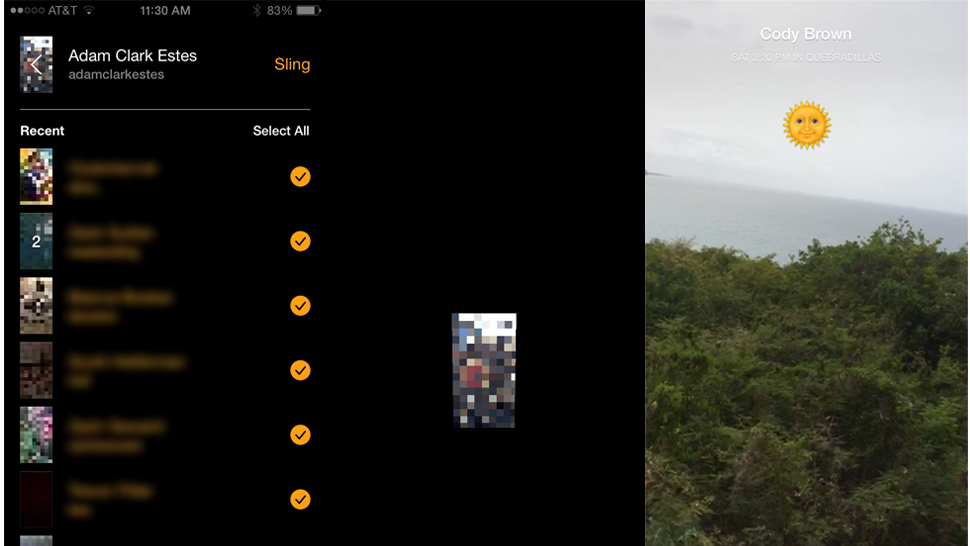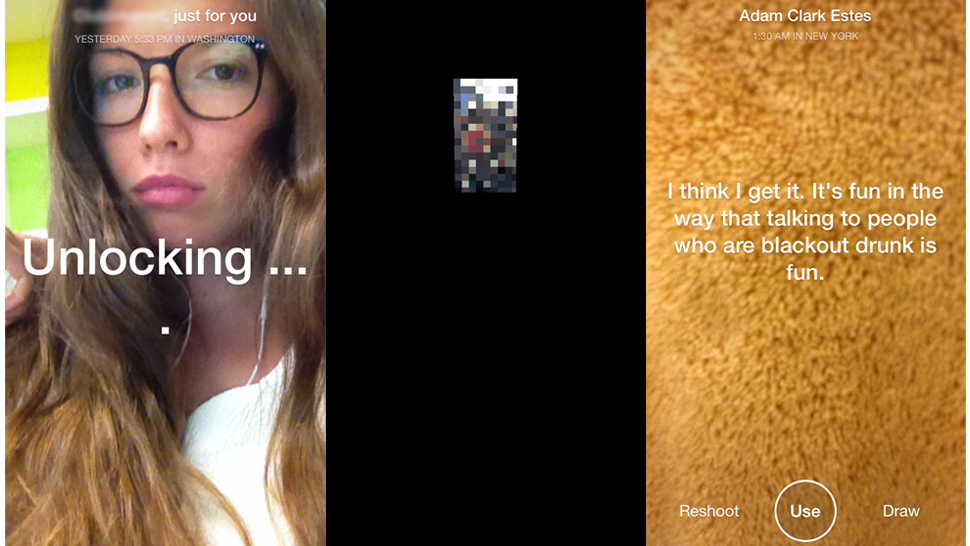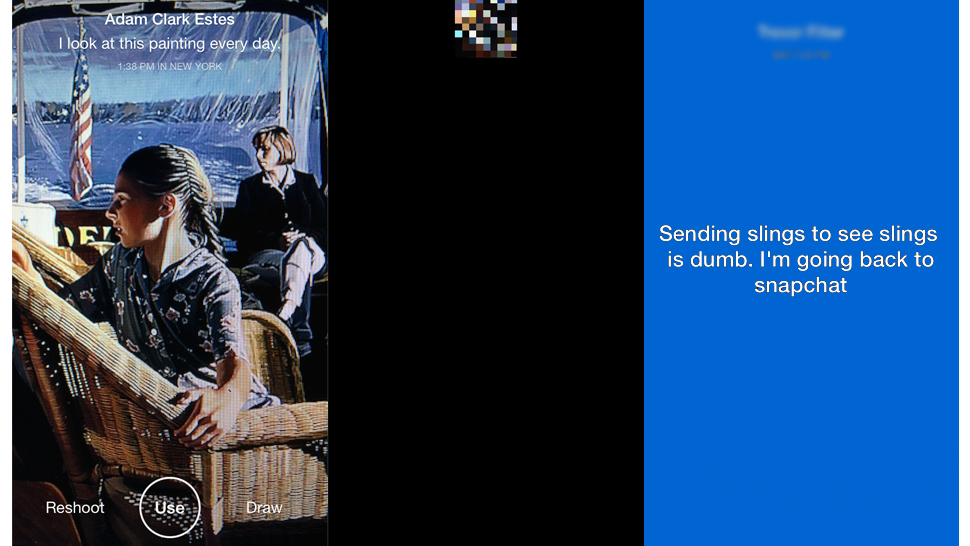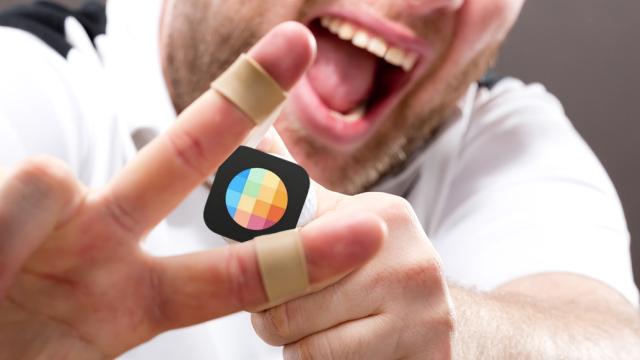Facebook’s new app, Slingshot, is confusing. The premise behind it is that you can send images to your friends — but they won’t be able to see your image until they send one back to you. As a messaging service, it’s flawed. But, according to the app’s designers, it’s not a messaging service. It’s something entirely different.
“It’s most definitely not a messaging app, because there’s no real way to have a conversation through sending shots,” Slingshot’s lead developer, Rocky Smith told Gizmodo in an interview. “Instead it’s more just a status update.” Smith and lead designer Joey Flynn had said similar things in other interviews, but they really drove the point home in a call with me on Friday. “We [don’t] look at Slingshot as a messaging product,” Smith said.
In other words, Slingshot is not a Snapchat clone. It’s an evolution of Facebook’s core principles to make sharing with your friends fun and easy. If you’re just trying to use it like a messaging service, you’re doing it wrong. Flynn explained that the app is designed to enable creativity and to work “like you interact in real life.” The team kept referring to shots as “moments.” It reminded me of Path (and all its failures).
The more you think about it, the more sense it makes. More on that in a second, though.
When Disruption Doesn’t Make Life Better
By saying Slingshot isn’t about conversation, the team indirectly answers one of the main questions the app leaves users with: Why is it so hard to follow what your friends are saying? You have to send two shots just to see one of a friend’s shots. But based on what the designers told me, the app wasn’t intended for communication, but a mode of communication a little more intangible. They wanted to make something disruptive. But also natural?
Everyone in Silicon Valley wants to make something disruptive — yet intuitive. Facebook, for one, is dying to do something interesting in the mobile space. But the company doesn’t want to steer the mothership off course, so it’s investing resources in Facebook Creative Labs. Slingshot is the second app to be produced through Creative Labs. (Paper was the first.) This incubator gives Facebook developers and designers a sandbox to play in, where they can “move fast and break things” without a billion people watching.
The problem with that methodology, of course, is that there are still a lot of people watching. Slingshot’s been featured in the Best New Apps section of Apple’s App Store since launch and made it into the top 20 most popular photo and video apps, a full 18 spots behind Snapchat. The app hasn’t really gotten much feedback — just 37 reviews in the week or so it’s been around — and a lot of it has been negative. One comment, in particular, spoke volumes about how it’s confusing users: “Need to reevaluate core function.”

Blame the Users
But what if all those ornery reviewers were just using it wrong? It’s easy to blame the users in a situation like this. You launch a very pretty new app with an admittedly unusual premise, and a backlash ensues.
Slingshot’s designers suggest that the backlash is tied to a core misunderstanding of how the app functions. In other words, it stinks at messaging because it’s not a messaging app. Rather, Slingshots a new kind of “moment” sharing app, albeit one that introduces more friction into the sharing process which is usually not a good thing.
Here’s the thing: the designers are right. My initial impressions of Slingshot were negative — when I was trying to use it to say anything. Thanks to a little curiosity and a couple of Slingshot-happy friends, though, I kept using it. And the less I tried to have a conversation through the app, the more fun I had.

It’s actually pretty fun to make these goofy little images and send them to a bunch of friends. It’s even a little bit comforting to know that the friction Slingshot introduces into the whole process means that your friends are really interested in the shots you send them. I started to treat Slingshot as a game in which my pals and I were just one-upping each other with weird images. By not trying to have a conversation, I ended up getting this interesting window into my friends’ lives.
Can an App That’s Hard to Use Ever Be Good?
Then we all got bored. At a certain point, several of my friends just switched to text, because they wanted to say something with words. They wanted to share the actual thoughts in their brain instead of some emoji overlaid onto a photo of a Greyhound bus. They wanted to ask me what was going on this weekend. They wanted to communicate with me.

It’s understandable that Facebook would want build an app that redefines sharing. Facebook, as a company, is struggling to shake the notion that it’s become a giant sometimes evil company. And Facebook, as a brand, desperately wants to find a new identity, now that it’s definitely not cool any more.
But when your designers have to explain that users are using an app wrong, there’s something flawed in the way that it was developed. Facebook won the social network wars because it made it easy to connect with your friends on the internet. It probably won’t win the mobile wars by making it harder.
